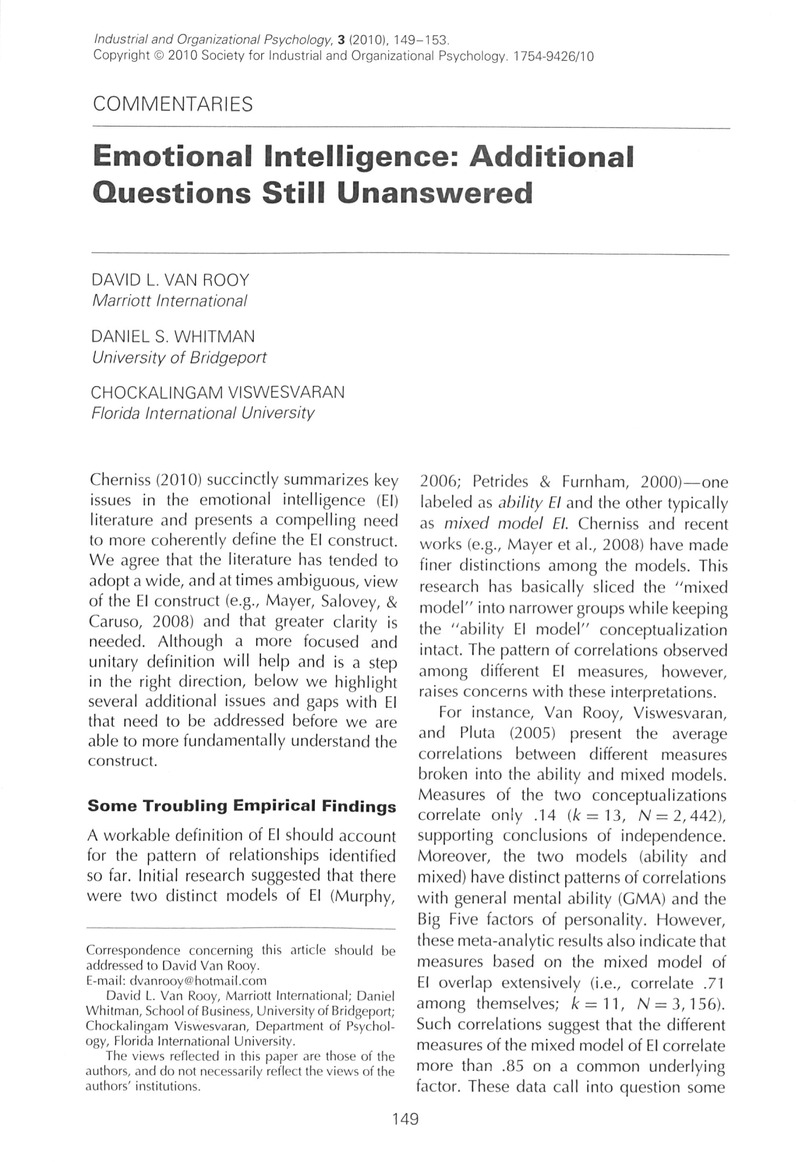Crossref Citations
This article has been cited by the following publications. This list is generated based on data provided by Crossref.
Cherniss, Cary
2010.
Emotional Intelligence: New Insights and Further Clarifications.
Industrial and Organizational Psychology,
Vol. 3,
Issue. 2,
p.
183.
Iliescu, Dragos
Ilie, Alexandra
Ispas, Dan
and
Ion, Andrei
2012.
Emotional Intelligence in Personnel Selection: Applicant reactions, criterion, and incremental validity.
International Journal of Selection and Assessment,
Vol. 20,
Issue. 3,
p.
347.
Lindebaum, Dirk
2013.
Does emotional intelligence moderate the relationship between mental health and job performance? An exploratory study.
European Management Journal,
Vol. 31,
Issue. 6,
p.
538.
Whitman, Daniel S.
Kraus, Eyran
and
Van Rooy, David L.
2014.
Emotional Intelligence among Black and White Job Applicants: Examining differences in test performance and test reactions.
International Journal of Selection and Assessment,
Vol. 22,
Issue. 2,
p.
199.
McCleskey, Jim
2014.
Emotional intelligence and leadership.
International Journal of Organizational Analysis,
Vol. 22,
Issue. 1,
p.
76.
Grunes, Paul
Gudmundsson, Amanda
and
Irmer, Bernd
2014.
To what extent is the Mayer and Salovey (1997) model of emotional intelligence a useful predictor of leadership style and perceived leadership outcomes in Australian educational institutions?.
Educational Management Administration & Leadership,
Vol. 42,
Issue. 1,
p.
112.
Michelangelo, Lori
2015.
The overall impact of emotional intelligence on nursing students and nursing.
Asia-Pacific Journal of Oncology Nursing,
Vol. 2,
Issue. 2,
p.
118.
Cheung, Siu Yin
Gong, Yaping
and
Huang, Jia-Chi
2016.
Emotional intelligence, job insecurity, and psychological strain among real estate agents: a test of mediation and moderation models.
The International Journal of Human Resource Management,
Vol. 27,
Issue. 22,
p.
2673.
Zhang, Ran
Redfern, Kylie
Newman, Meredith A.
and
Ferreira‐Meyers, Karen
2016.
If You Are Emotionally Intelligent: The effects of customer‐related social stressors on counterproductive work behavior for front‐line service employees.
International Journal of Selection and Assessment,
Vol. 24,
Issue. 3,
p.
260.
2018.
The Emerald Review of Industrial and Organizational Psychology.
p.
767.
Hadchiti, Roula
Frenette, Eric
Dussault, Marc
Deschênes, Andrée-Ann
and
Poirel, Emmanuel
2021.
Processus d’élaboration et de validation d’un questionnaire portant sur le développement des compétences émotionnelles lors du mentorat.
European Review of Applied Psychology,
Vol. 71,
Issue. 4,
p.
100651.
Rodrigues, Nuno
and
Rebelo, Teresa
2022.
The bandwidth dilemma applied to trait emotional intelligence: Comparing the contribution of emotional intelligence factor with its facets for predicting global job satisfaction.
Current Psychology,
Vol. 41,
Issue. 4,
p.
2218.



